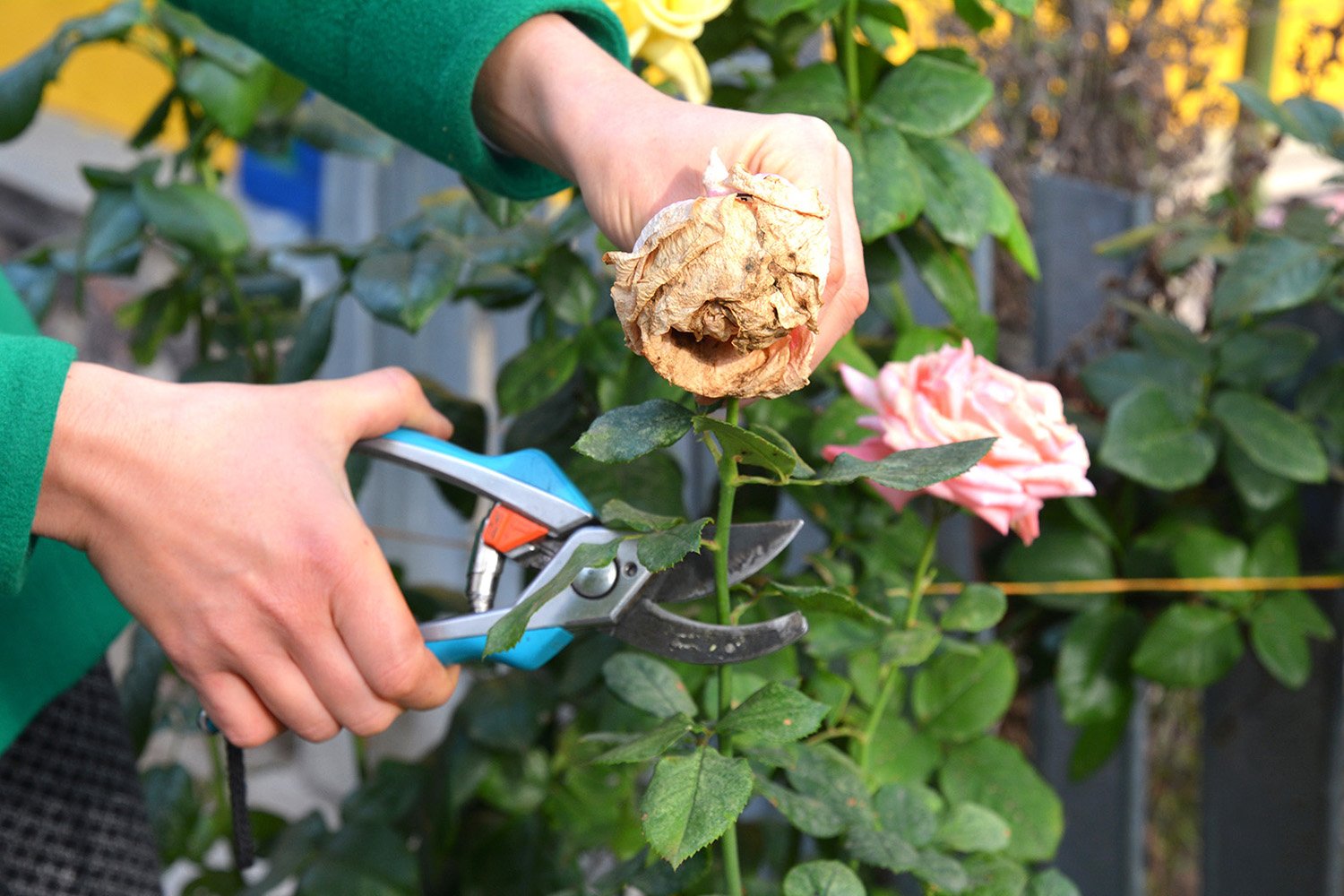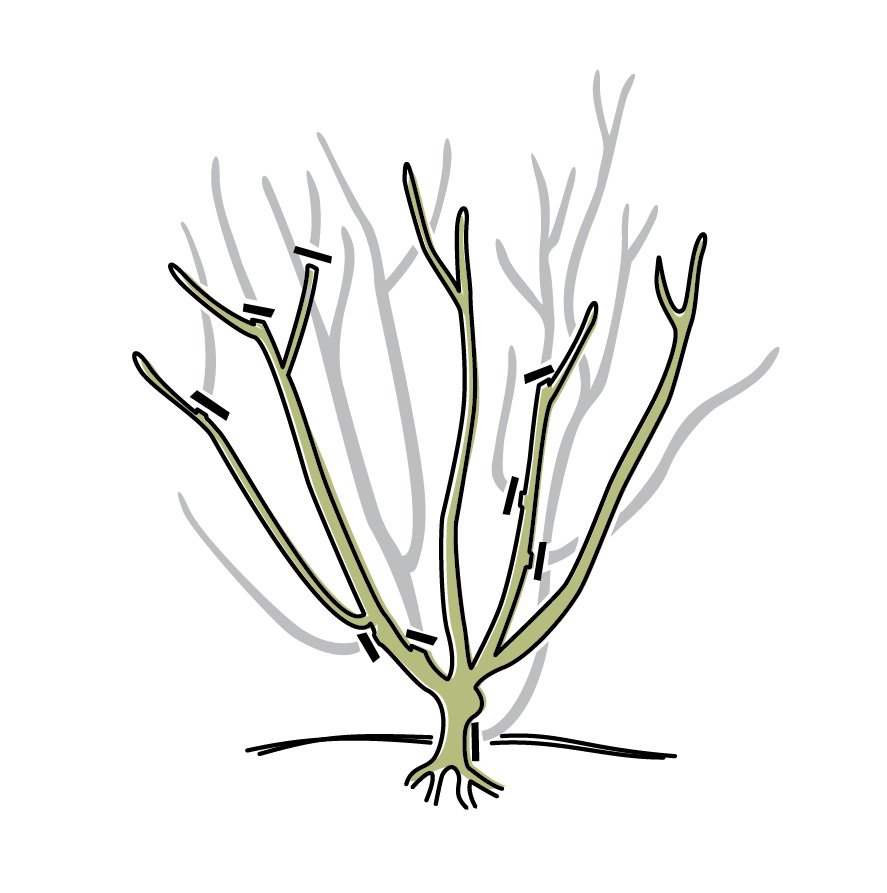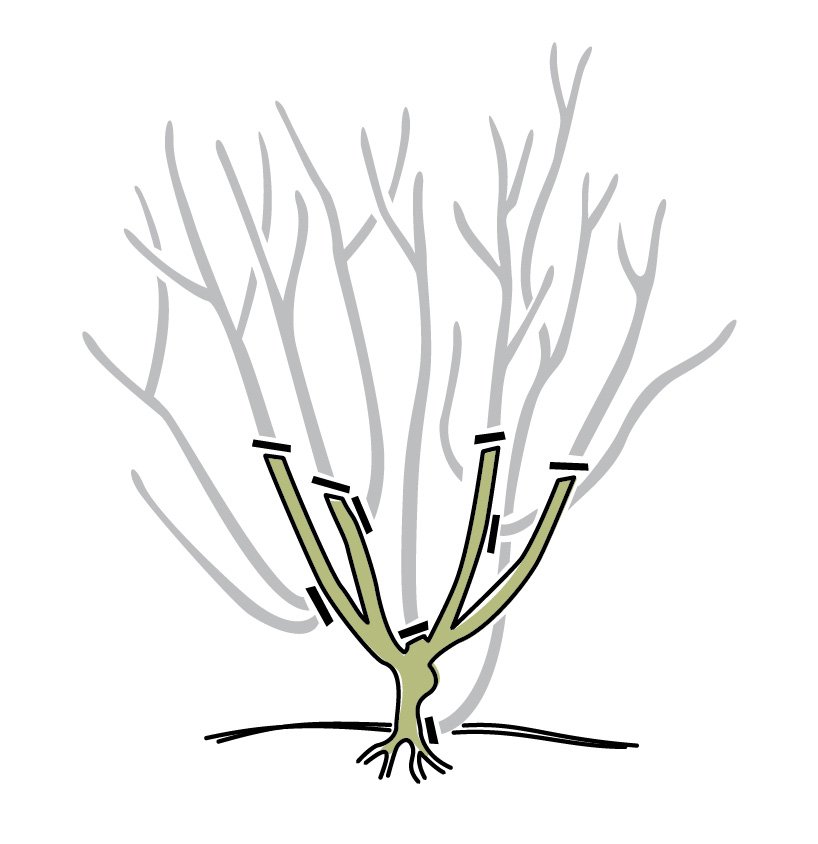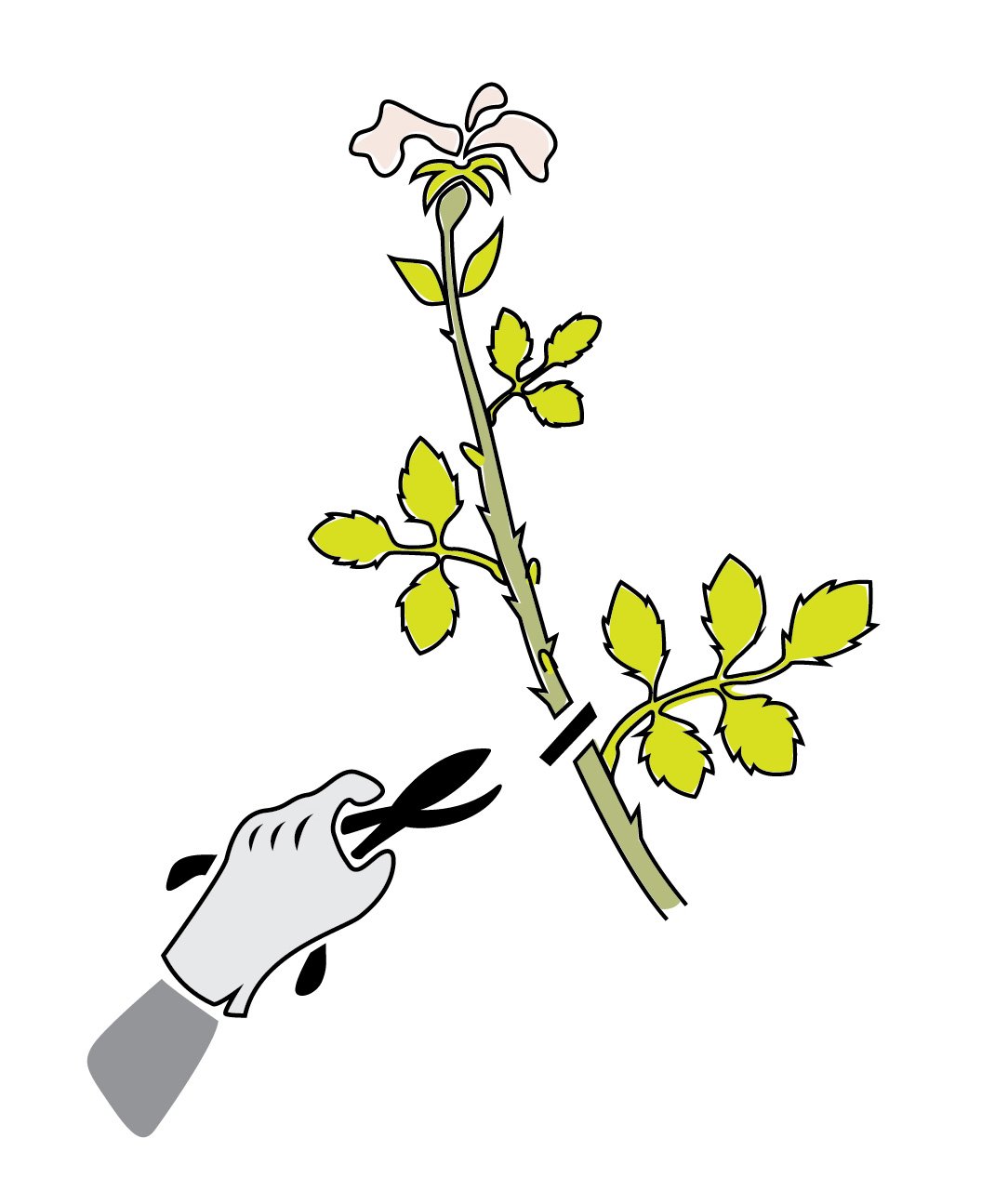The world’s favorite flower just might be the rose, inspiring epic romantic poetry, sonnets, even wars, for thousands of years. Rose gardens distinguish public spaces such as the University of Washington campus. And, in addition to bestowing elegance and altering the course of history, roses offer us an astonishing variety of flower types, fragrances, and colors!
So we want to keep them looking their best. Along with consistent watering and periodic fertilizing (see our previous blog post How to Grow Roses in the PNW), proper pruning can significantly improve most roses’ blooming performance and overall health.
The University of Washington’s Rose Garden and Drumheller Fountain, in all their glory
Why Prune Roses?
Pruning roses for health has a similar approach to many other multi-branched shrubs. It’s good to reduce crowded branching by removing some of the thinner canes growing up through the middle of the bush (especially if they are touching other canes). In addition to improving appearance, this “thinning” improves air circulation which helps to minimize conditions for disease. Our previous blog post Pruning 101 explains the fundamentals of thinning.
Pruning hybrid roses before the growth season stimulates vigorous new growth and flower buds. During the growing season, light pruning and heading back, as well as deadheading (removing spent flower heads) helps keep your roses blooming and looking “tended” rather than the wild, thorny brambles that some rose bushes can become.
Don’t worry if you’re unfamiliar with these terms, or about pruning your roses perfectly. Most shrubs, including roses, are pretty forgiving. We’ll talk about what, when, and how to prune next.
Which Roses to Prune
HYBRID ROSES (including hybrid teas, floribundas, and grandifloras)
These roses flower on new growth. To encourage maximum flower production, head them back in late winter (before the growing season). This directs more energy into flowering canes and helps control the plant’s growth habit. You generally want to preserve the largest, strongest canes, but can periodically remove older canes to regenerate new ones.
CLIMBING ROSES
Climbing roses bloom on older growth, so annual heading back is not typically needed. You may still want to head back aggressive or wayward shoots. Where space allows, train the main vines horizontally to encourage vertical side shoots, which will produce the most blooms.
Old, tangled climbers may need regenerating by being headed back close to their base and allowed to regrow primary branches. But they may take a couple of years or more to regain full blooming.
SHRUB ROSES
Many shrub roses, such as rugosas and natives, need little or no pruning to aid blooming but they can be periodically thinned out if density is causing dieback. These roses, as well as ‘Flower Carpet’ and other groundcover roses, can also be cut back to reduce crowding of their neighbors.
Many shrub roses are known for their ornamental hips, so minimize deadheading on those unless your priority is maximum flowering.
ENGLISH ROSES (also known as David Austin roses) are considered shrub roses but are typically pruned similarly to hybrid roses.
When is the best time to prune roses?
Late winter is the time to do major pruning, while the other growing seasons are ideal for light pruning to keep your roses healthy and productive. Below are tips for pruning in each season, plus how to make good cuts when you prune.
LATE SPRING & SUMMER
Cut blooms for bouquets, and fine-tune as needed, including deadheading spent blooms, thinning out crowded branches, and heading back any aggressive outer shoots. This seasonal pruning helps with overall maintenance.
Summer is the ideal time for deadheading and light pruning
LATE FALL
Head back lightly to clean up the look and remove old flowers. Remove hips (fruits) unless they are particularly ornamental (as with rugosas) or you are leaving them for wildlife. Canes on hybrids may be cut back to 3-4 feet high.
Rugosa rose with bright red rose hips
LATE WINTER
Annual major (pre-season) pruning of roses in western Washington is best done around the end of February. Pruning earlier in winter can increase the risk of dieback if we get hard freezes. Major pruning later in spring can interrupt their optimal growth period.
Moderate pre-season (winter) pruning of roses
For winter pruning of hybrid roses, we generally prune to encourage the largest, strongest canes. Remove any twiggy, weak or dead wood. How much to take off depends somewhat on size and type of blooms you wish to encourage:
LIGHT pruning with bushes left tall makes next season's bloom short-stemmed but profuse.
MODERATE pruning leaves five to ten canes per bush, about one- to four-feet-high. This tends to produce a fine display of blooms, many that are long-stemmed (depending on the cultivar). More common with floribundas and grandifloras.
HARD pruning leaves only four canes per bush, all shorter than one foot. This allows easier covering if winter freeze protection is needed and produces the longest-stemmed blooms. Better for the larger-flowered hybrid teas than floribundas or grandifloras.
How to Prune Roses
make good cuts
On each branch you wish to prune, choose a bud (or leaf stem or branch) where you want to direct its future growth. Generally, choose one pointing out, away from the plant’s center, to encourage a more open, vase shape. When deadheading or heading back in the summer, cut back above a leaf with at least five leaflets. Those with three leaflets are less likely to develop new flower buds.
Cut close to the bud, but not close enough to damage any of it. Typically, on a rose cane you want to cut 1/8 to 1/4 inch beyond the bud, varying with the thickness of the cane. But no need to be too precise — the point is to minimize the leftover the stub but not damage the bud.
It’s good to angle your cut away from the bud to minimize the stub. Also, try to angle the cut so it is not level — to prevent water drops from settling on the cut end of the cane (which can increase dieback).
Keeping pruning blades sharpened is important for making clean cuts on any plant. This minimizes crushing or tearing of its tissue — especially important with the pithy wood on most rose canes. It’s better to use a bypass pruner (cutting blade slides past the lower prong) rather than the older style anvil pruners (cutting blade butts against the “anvil” on the lower prong).
There are professional sharpening services available (many local hardware stores offer this). But unless your pruning blade is extremely dull you can sharpen it yourself with a small whetstone or pruning file.
Watch for the Graft
Hybrid roses are grafted onto hardy rootstock. You can usually identify the graft (or “bud union”) as a swelling or knot a couple of inches above where the roots start.
Every cane that originates from above the graft should grow and bloom as the named cultivar, which is a plant that has been selectively bred for specific traits. For example, ‘Mr. Lincoln’ (deep red) and ‘Julia Child’ (yellow) roses are both hybrid roses but are different cultivars.
Any cane that originates from below the graft is growing from the rootstock (not the cultivar) and often is more aggressive and has different blooms than the rest of the plant. These root “suckers” should be cut off when you see them.
If the rose bush was planted too deep or its trunk was allowed to be covered with soil or mulch over time, it can be difficult to know whether new growth from the base is hybrid growth or a root sucker. You might need to observe its growth habit and any blooming to decide whether to remove it or not.
Other Pruning Tips
PRUNING NEAR DISEASED TISSUE
If you see brown or black coloration or lesions along the surface or a cane, or in the wood or pith after making a cut, that cane may be affected by canker or another internal disease. Affected growth should be removed as much as possible and disposed of (not composted or left on the ground where disease spores could spread to other plants). Cut further down the plant a few inches beyond where you see any of the dark color. When signs of disease are present, sterilize your pruning blades between each cut with rubbing alcohol.
Leaf diseases such as black spot or powdery mildew do not affect internal wood or pruning practices, but affected leaves should be removed and disposed of the same way.
Did we mention thorns?
Yes, those ubiquitous thorns are an unfortunate side effect (literally!) of keeping roses. They can be nasty to touch or get hooked on your clothing, so always be aware when walking near or reaching into a rose bush. We suggest wearing full leather or leather-palm garden gloves. And when cutting and pulling out canes from the middle of a larger rose bush, it may help to reach in with sharp, long-handle loppers rather than using hand shears. Eye protection is recommended, too.
In any case, go slow and be mindful of your reach and what you are grabbing. You might get poked a few times — we all have — but you will do fine!
References
There are many good books available on general pruning, including roses. Here are a couple of our favorites (check your local bookstore or online for these):
Cass Turnbull’s Guide to Pruning by Cass Turnbull
American Horticultural Society - Pruning & Training by Brickell & Joyce
The Pruning Book by Lee Reich












